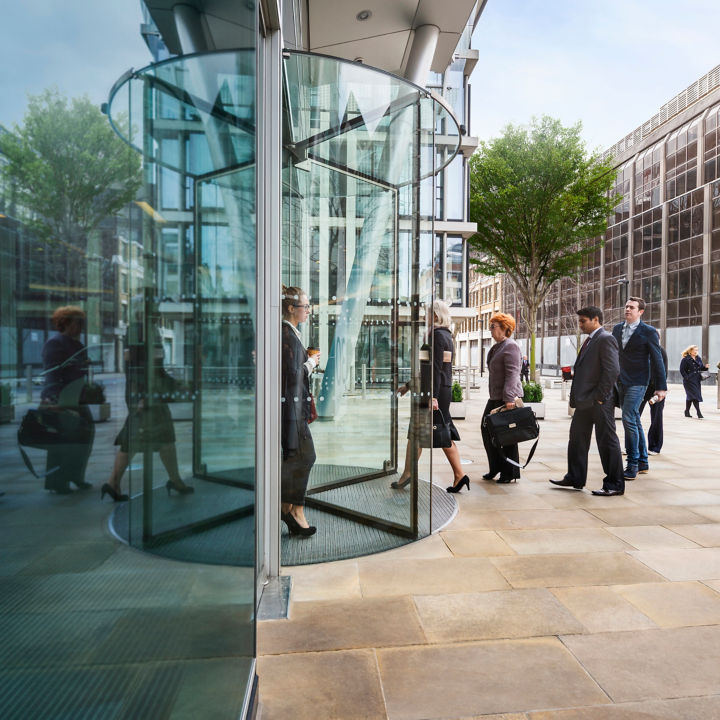
In modern London, you might find a Victorian-era building next to an ultramodern skyscraper. One such example is in the City of London, where the 14th century Leadenhall Market with its cobbled walkways and red brick walls stands very close to the new Leadenhall Building, a distinctive 45-story steel-and-glass skyscraper. This diversity offers a rich experience for residents, workers, and visitors, demonstrating how old and new can coexist beautifully. However, in other parts of the city, historic buildings may not always fit the needs of people and society today – at least not without upgrades.
“One of the biggest drivers of modernization is sustainability,” explains John McElgunn, senior director at the architectural practice RSHP.
“Knocking down an old structure and building a new one can be carbon wasteful. Modernization can retain the embodied carbon in a building and improve the in-use carbon, meaning the emissions associated with the use of the building can be reduced.”
Additionally, a building originally designed for doormen and elevator operators might not have all the features people expect today. While conservation preserves an old building, modernization gives it an update to contemporary standards.
“A modernization project will provide a better user experience,” says Samu Salmelin, head of major projects at KONE GIN (Great Britain, Ireland and Netherlands). “This includes improved people flow, a more enjoyable ride, and better access to smart building services and amenities.”
Modernizing London with sustainable and smart solutions

RSHP and KONE work together on a variety of projects, ranging from the new Leadenhall Building to modernization projects like 20 Carlton House Terrace. Built in the 1970s and extended in the 1990s, 20 Carlton House Terrace was a low-quality building considered for demolition, but RSHP worked with the client to achieve many of the advantages of a new building while retaining the existing superstructure with all its embodied carbon.
“We opened up the building, created a new panoramic elevator core with an atrium bringing light all the way to the basement. The existing structural frame was retained and the reconstituted stone from the façade was reused,” McElgunn says. “We worked closely with KONE to put in a new central elevator core.”

Modernizing a building also means elevator modernization. Depending on the project, this could mean entirely new elevator systems, new elevators in old shafts, or refurbishment and upgrade of existing systems.
New technical solutions and smart and sustainable people flow solutions can also help improve the experiences of people living and working in modernized buildings. The latest destination control and access solutions can also be used, providing the same benefits of touch-free access, guidance to destinations, and faster, smoother journeys found in brand new buildings. In one project in Canary Warf, KONE changed old elevators into double-decks to improve the flow of people. These elevators serve two adjacent floors simultaneously, reducing wait times and improving overall efficiency.
Elevator upgrades in Winston Churchill’s old office

Special care is necessary when renovating historically and architecturally important buildings, like the Old War Office (The OWO), a Grade II-listed building which opened in 1906 and where Winston Churchill once worked. KONE helped to transform The OWO into residences and a luxury hotel.
“In certain cases, in an old building the customer wants to maintain historic elevators for aesthetic reasons. In these cases, it is possible to modernize hidden components and still leave the historic part visible to the end user,” says Salmelin.
“We do this in other projects, too, like when a customer wants upgrades carried out in stages. We work with them and develop a long-term renovation plan together. Customers appreciate our capability to manage and deliver these demanding projects successfully.”
Salmelin also points out that modernization projects can improve the safety and accessibility of these historic buildings. A modern elevator can allow people with mobility issues access to even centuries-old Tudor-era buildings.
Revitalizing the whole neighborhood

The needs of the people and businesses in a modern city like London are constantly changing, and often a project will involve adaptive re-use – repurposing existing buildings for new use.
In Westminster, the Thirty High skyscraper originally opened in the 1960s as offices. The modernization project will turn it into a mixed-use net zero building, including a rooftop restaurant with panoramic views over London – enabled through KONE's machine room-less elevator for high-rise buildings.
The modernization of an old building can revitalize the entire neighborhood and act as inspiration for other properties to become more sustainable.
“It is easier to rent a place when it has interesting amenities in and around the building,” says McElgunn.
“In the post-COVID era we need to make the commute to the office worthwhile, and that includes activities other than working. If you have art, culture, retail, and leisure places nearby you have many more things to do after work.”

Modernizing an old building has its challenges in preserving history and meeting modern standards. Yet with teamwork and the willingness to take risks the results are worthwhile.
“I like how KONE thinks ‘what can we do’ instead of ‘what we can’t do’,” McElgunn says. “In one project we had air buffeting that caused vibrations and noises in an elevator shaft. The KONE team came up with an airfoil like on an F1 car, a really innovative way to solve the problem.”
“As more buildings worldwide undergo modernization to meet the sustainability expectations of customers and end users, embracing innovative solutions and a proactive attitude is essential,” says Salmelin.
“When we partner with our customers, we make building upgrades easier and more effective, all while helping shape the future of cities.”
